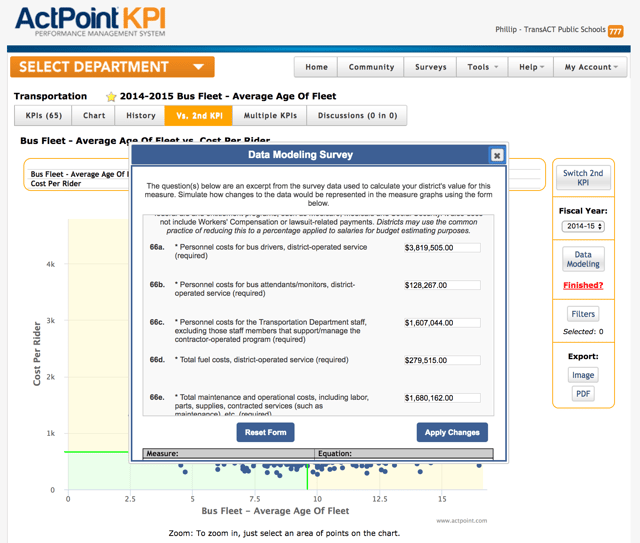For the past decade, district operations leaders have shown that measuring and analyzing the performance of district operations can help create a high-performing, efficiently operating district that directly impacts student achievement. While there are any number of items a district operations leader can measure within their district, a focus on analyzing rigorous and proven Key Performance Indicators (KPIs) in areas such as transportation, food services, maintenance, and business services departments across the district is proving to be pivotal in meeting the mission to cut costs and positively impact student outcomes. The Council of Great City Schools (CGCS) has developed a framework and an annual report to support operations leaders across the country in adopting KPI analysis in their districts.
In 2004, the Council of Great City Schools set out to create a framework for measurement and analysis in school district operations and to help district business leaders think strategically about how to improve processes, conserve resources and positively impact student achievement while managing the school district budget. In conjunction with TransACT, CGCS founded the ActPoint® KPI Project with 5 goals:
- Establish a common set of non-instructional KPIs which a district anywhere in the nation could use
- Allow a district to benchmark performance on these key performance indicators
- Identify and document effective management practices of the top-performing districts to improve operations
- Automate performance data in a way that allows districts to improve resource deployment and decision making over time
- Develop standards of excellence on each of the indicators

Over the course of several years, districts nationwide piloted the KPIs and results were compared. Today, ActPoint KPI is a tool for school districts to manage their business and operations efforts in a way that is typically only found in Fortune 500 companies. Since the inception of the ActPoint KPI project, CGCS has been a leader in collecting nationwide performance data, analyzing the results, and providing resources for operational improvement.
Specifically, CGCS produces an annual executive summary of nationwide district operations performance, which seeks to give leaders both guidance and a benchmark for ideal performance levels on over 500 operational metrics. These performance reports, called "Measuring for Results in America's Great City Schools", are made available annually for free, and they contain a performance summary and analysis of over 500 KPIs. Each KPI has a section that explains:
- The definition of the metric and what it seeks to measure
- An explanation of what it is important
- Factors that influence each measure
- An analysis of the nationwide data that was collected
- A chart that shows anonymous district performance, median performance, and high/low performance
The report gives an overview of the nation's performance over the past year and helps leaders answer important questions about their operations, including "What are Key Performance Indicators?" and "What is the best opportunity I have to improve school district operations?" These KPIs are often used in strategic district plans, to provide internal and/or external transparency, advocate for more resources, and to help district leaders manage for results.




